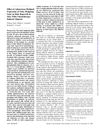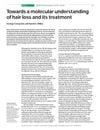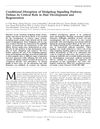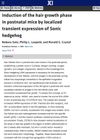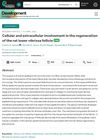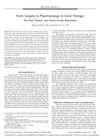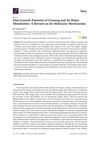Regenerative Medicine of Epidermal Structures
January 2012
in “
Elsevier eBooks
”
hair regeneration minoxidil finasteride sonic hedgehog gene therapy hair follicle transplantation epidermal cell transplants mesenchymal stem cells growth factors hydrogels acellular dermal regeneration templates Alloderm Integra chronic wounds extracellular matrix pattern baldness Rogaine Propecia Shh gene therapy MSCs
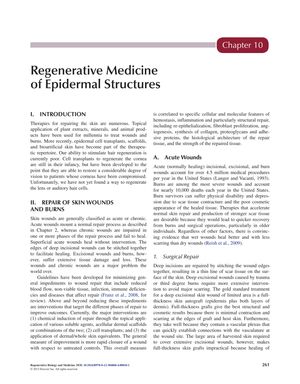
TLDR New treatments for skin and hair repair show promise, but further improvements are needed.
The document from January 1, 2012, explores various regenerative medicine strategies for repairing epidermal structures, with a focus on skin wound healing, chronic wound management, and hair regeneration. It discusses the use of different therapies such as plant extracts, minerals, animal products, epidermal cell transplants, scaffolds, and bioartificial skin. For acute wounds, surgical repair techniques like full-thickness skin autografts and meshed split-thickness skin grafts are mentioned, though they may lead to weak attachment and scarring. Topical agents and growth factors are tested to enhance wound repair and reduce scarring. The document also covers the use of hydrogels and acellular dermal regeneration templates like Alloderm® and Integra® for structural repair, and cell transplant therapies for rapid re-epithelialization. It highlights the potential of mesenchymal stem cells (MSCs) in acute wound repair and the challenges faced by dermal or whole skin equivalents, such as slow vascularization and immunorejection. Chronic wounds are characterized by persistent inflammation and defective extracellular matrix production, with various agents showing effectiveness in promoting repair. However, the restoration of normal skin appearance and function, including hair follicles, sebaceous glands, and sweat glands, remains a challenge. For hair regeneration, the document discusses treatments for pattern baldness, including hair follicle transplantation, minoxidil, finasteride, and the potential of sonic hedgehog (Shh) gene therapy. It also describes successful treatments for corneal damage, including autografts of limbal tissue and the use of autologous oral epithelium, with a stable outcome at 10 years post-transplantation in 77% of 112 patients. The document concludes that while there are available therapies for skin wounds, hair loss, periodontal injuries, and corneal diseases, there is still much to learn and improve in the field of regenerative medicine.
